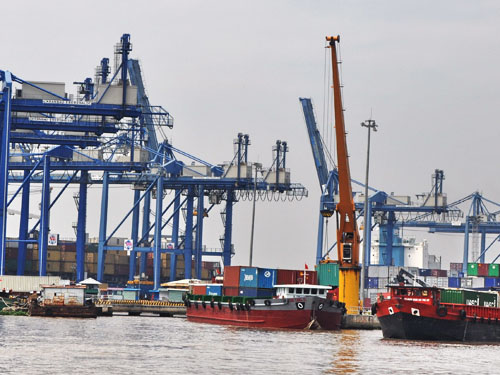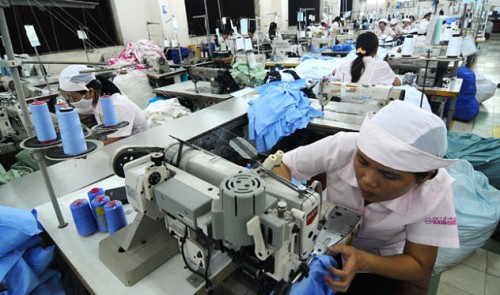Barriers hit exports to Japan
Barriers hit exports to Japan
Vietnamese small and medium-d enterprises (SMEs) sector, need to overcome technical barriers if they are to take full advantage of a bilateral agreement and boost exports to Japan, experts say.

At a seminar held in Ha Noi on Tuesday, experts said strong tariff cuts under the agreement had opened up opportunities for domestic products to enter the Japanese market, especially agricultural produce, seafood and garments.
They said that most Vietnamese products, about 80 per cent, enjoyed preferential tariffs after the Viet Nam-Japan Economic Partnership Agreement (VJEPA) took effect in 2009, but exporters had not reaped due benefits.
The main reason for this was that the number of technical barriers had increased, they added.
The seminar dealt with special preferential import tariffs for implementing VJEPA in the 2015-2019 period and opportunities thereof for Vietnamese businesses.
As many as 2,586 tax lines were to be removed immediately by Japan after the agreement took effect in October 2009, or 28 per cent of the total 9,390 lines committed.
After 10 years (in 2019), an additional 3,717 tariff lines are to be scrapped, bringing the total to 6,302 lines or 67 per cent of committed lines.
On this side, Viet Nam would, within 10 years, apply zero per cent taxes on 87 per cent of product value exported from Japan to Viet Nam. It would also remove more than 8,873 tax lines at the end of the roadmap (in 2025), or some 96 per cent of the committed tax lines
It was said then that Viet Nam would still protect products that it enjoys specific advantages in, and only import what it needs for domestic investment and production, especially machinery, equipment and technology.
Under 2015-2019 commitments, from April 1, 2015 as many as 150 tariffs lines were to be slashed to 0 per cent, bringing the total to 3,234 lines or 34.09 per cent committed lines.
Tariff lines for goods like computers, electronics items, garment and footwear would be slashed first, and go to zero per cent in the next phase.
Vietnamese businesses will face a stiff challenge as their products have to compete with Japanese products in particular, and that of other countries that are negotiating the Trans-Pacific Partnership agreement.
Once import tariffs on more than 3,200 lines will go down to zero per cent, Japanese goods will flood the domestic market. The local preference for imported products would be a barrier for Vietnamese businesses having to compete in the domestic market.
Tran Dinh Thien, Director of the Vietnam Institute of Economics, said TTP members included developed countries like the US, Japan and Singapore who set high standards for imported products that Vietnamese firms would find difficult to meet.
In such a situation, local firms were forced to do business with countries that have less stringent requirements, the seminar heard.
Thien said domestic enterprises should focus on a product's added value rather than productivity, and on developing products unique to Viet Nam.
Echoing Thien's opinion on improving product quality, Nguyen Son from the cross-sector Steering Committee for international economic integration stressed the need for domestic products to meet Japanese standards.
Do Van Dung, Chairman of the Vietnam-Japan enterprises association also said production methods and processes had to be improved so that Vietnamese products can satisfy Japanese quality and safety requirements.



















